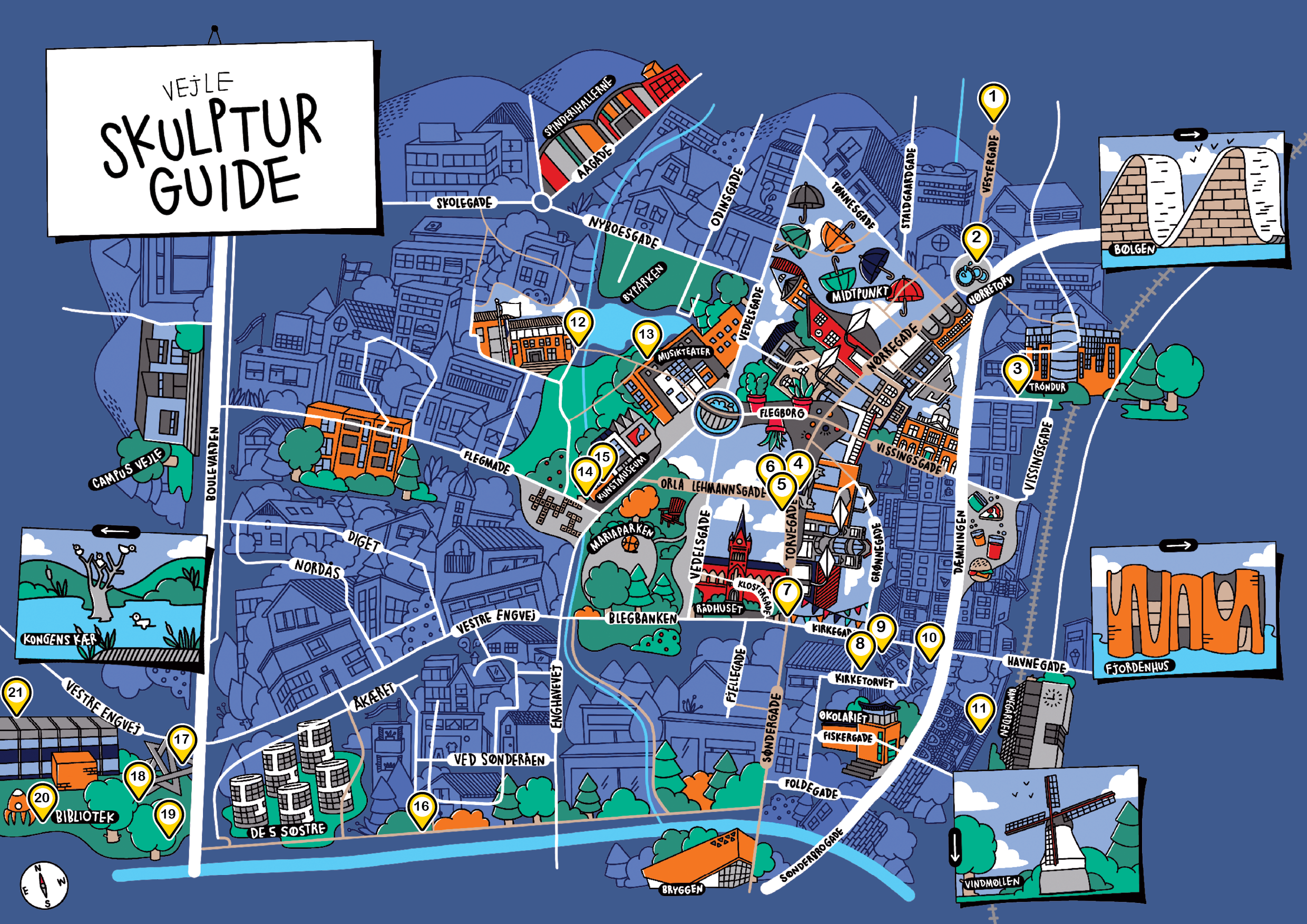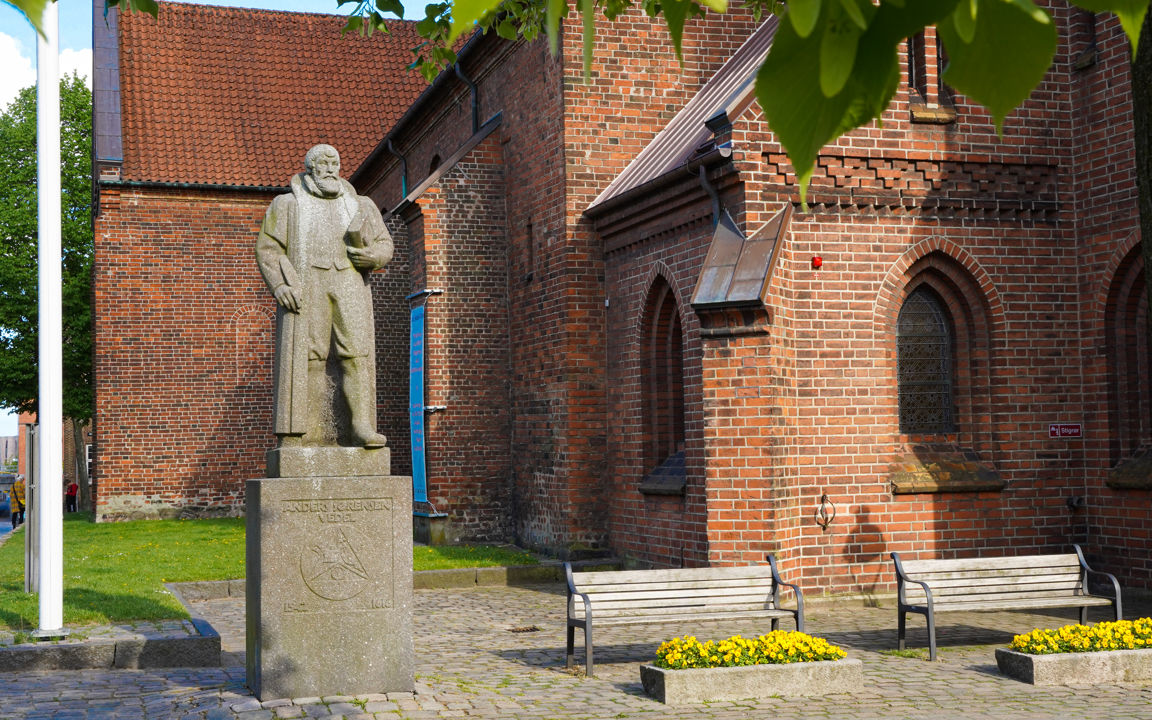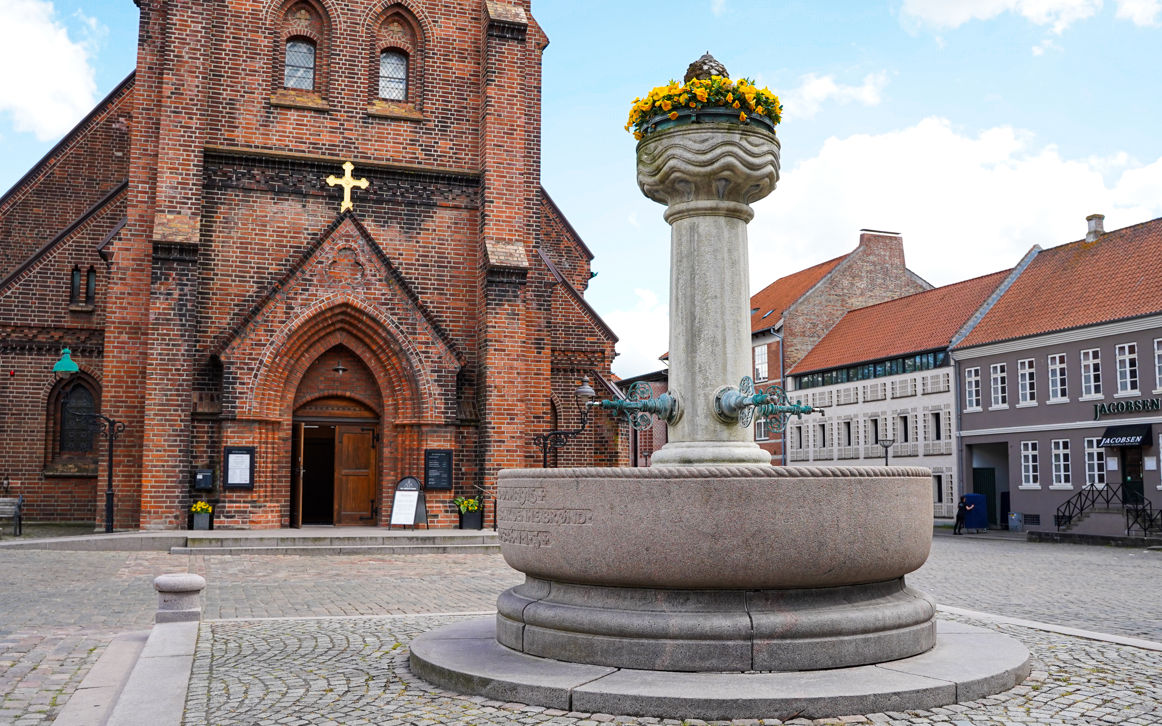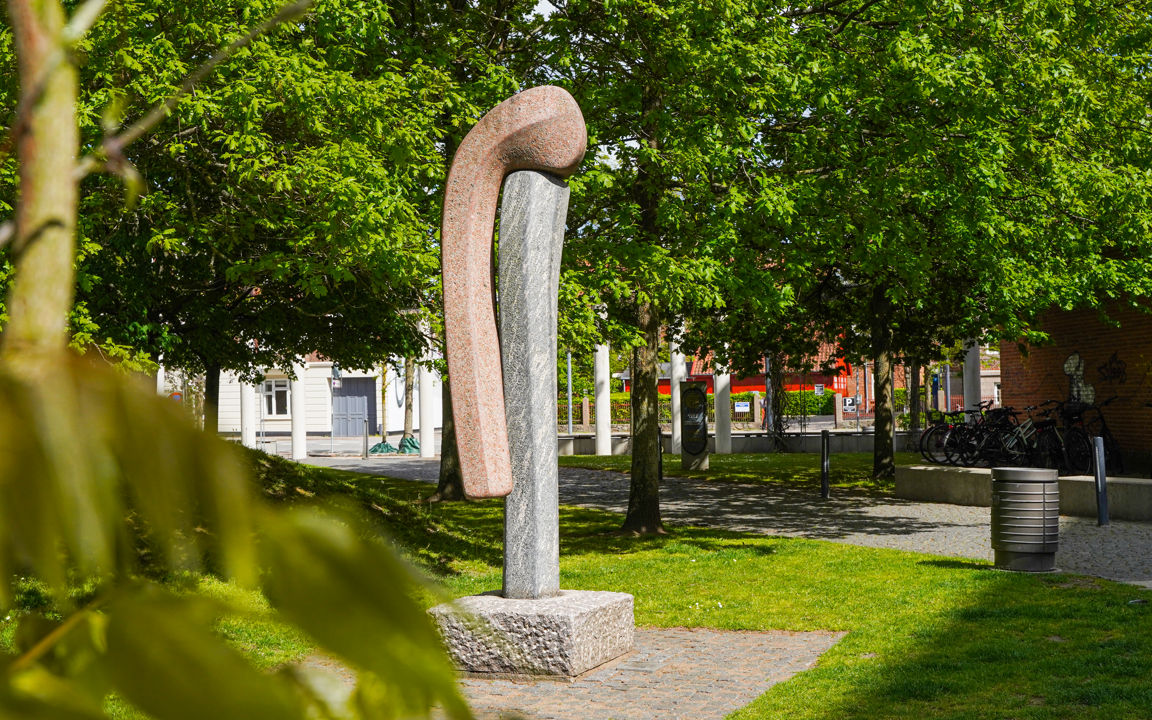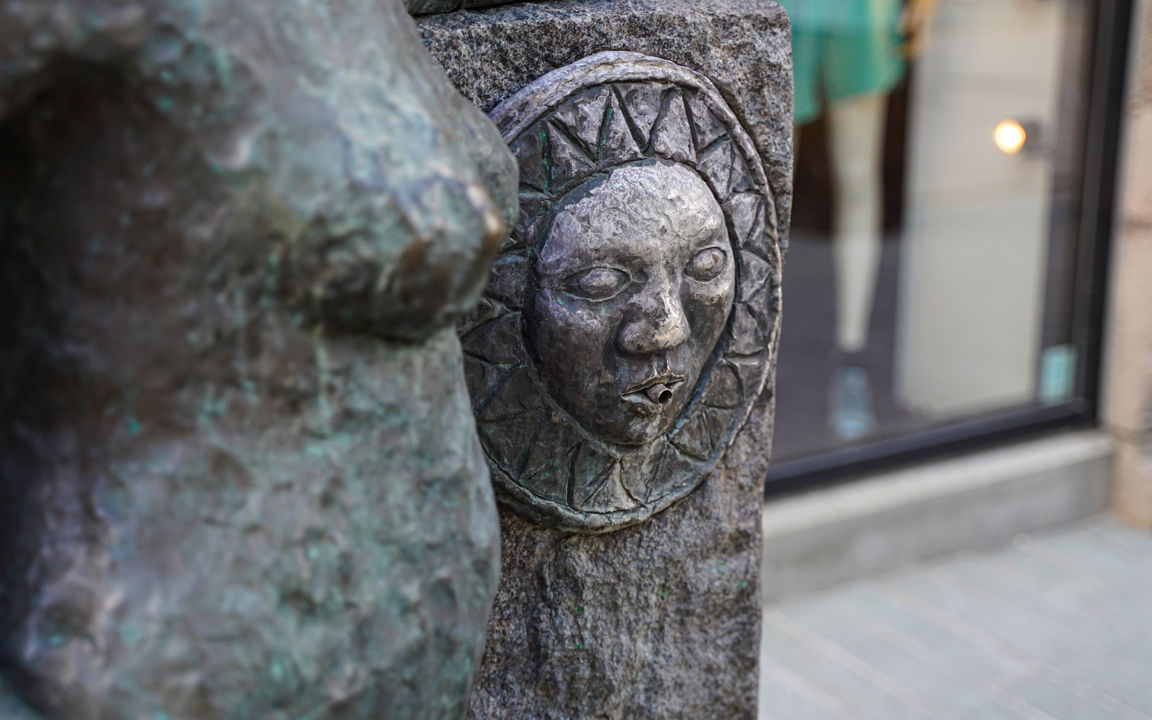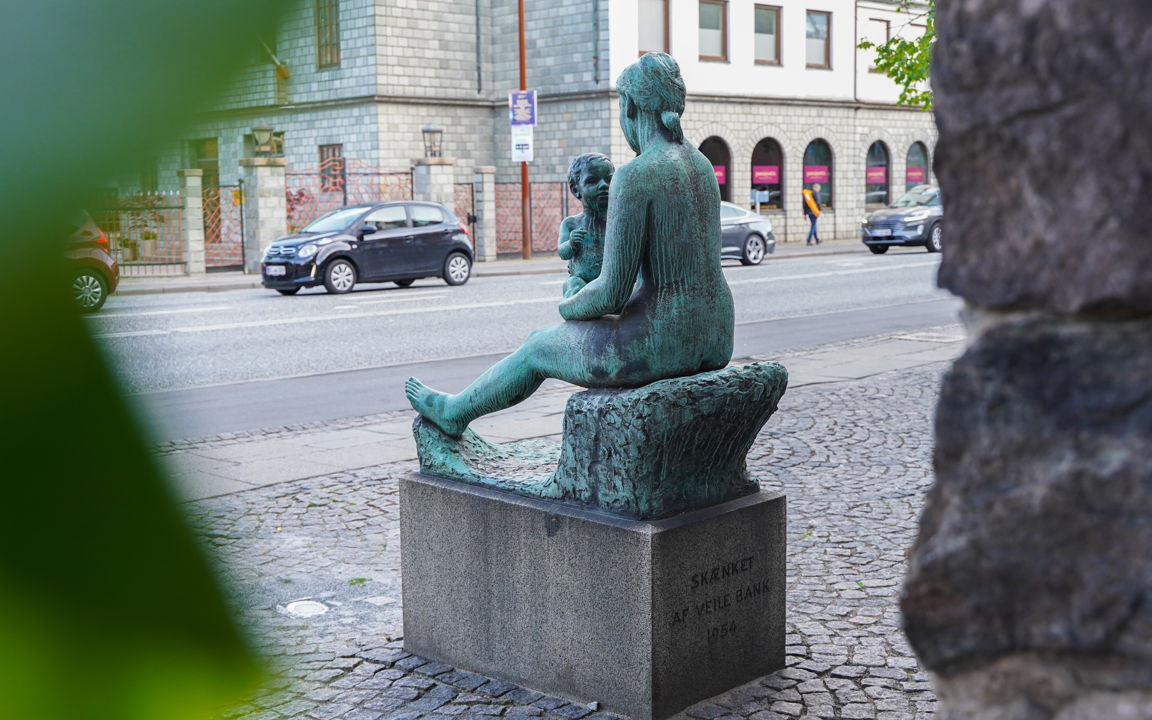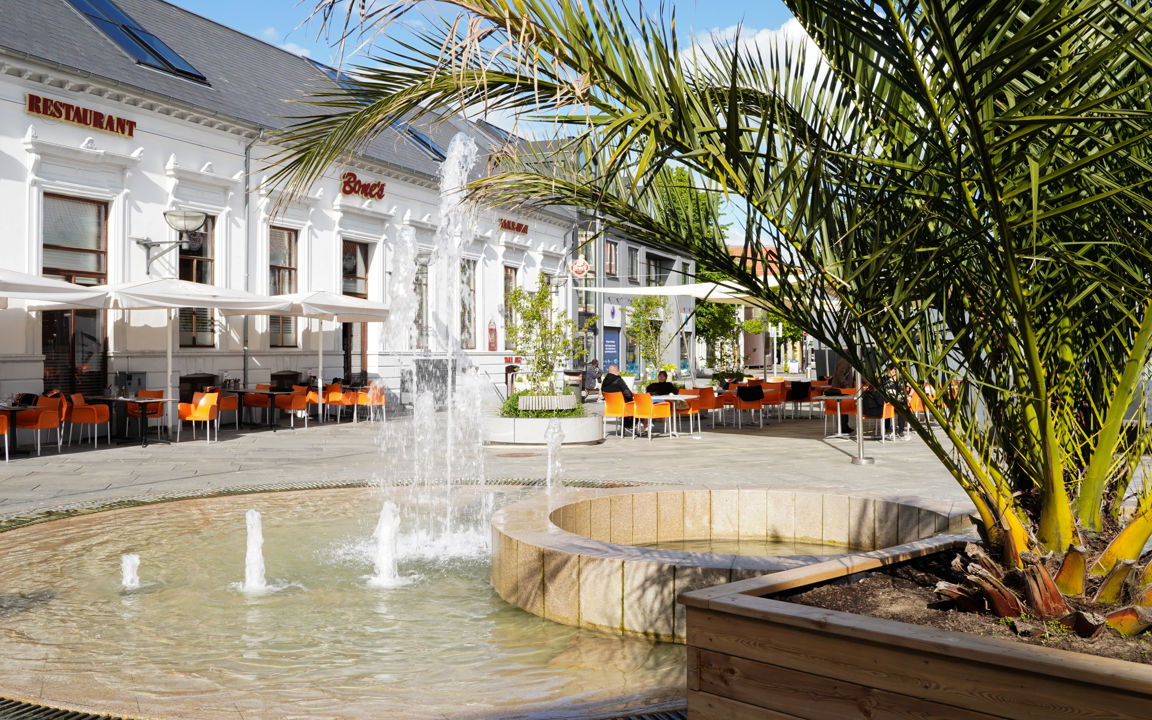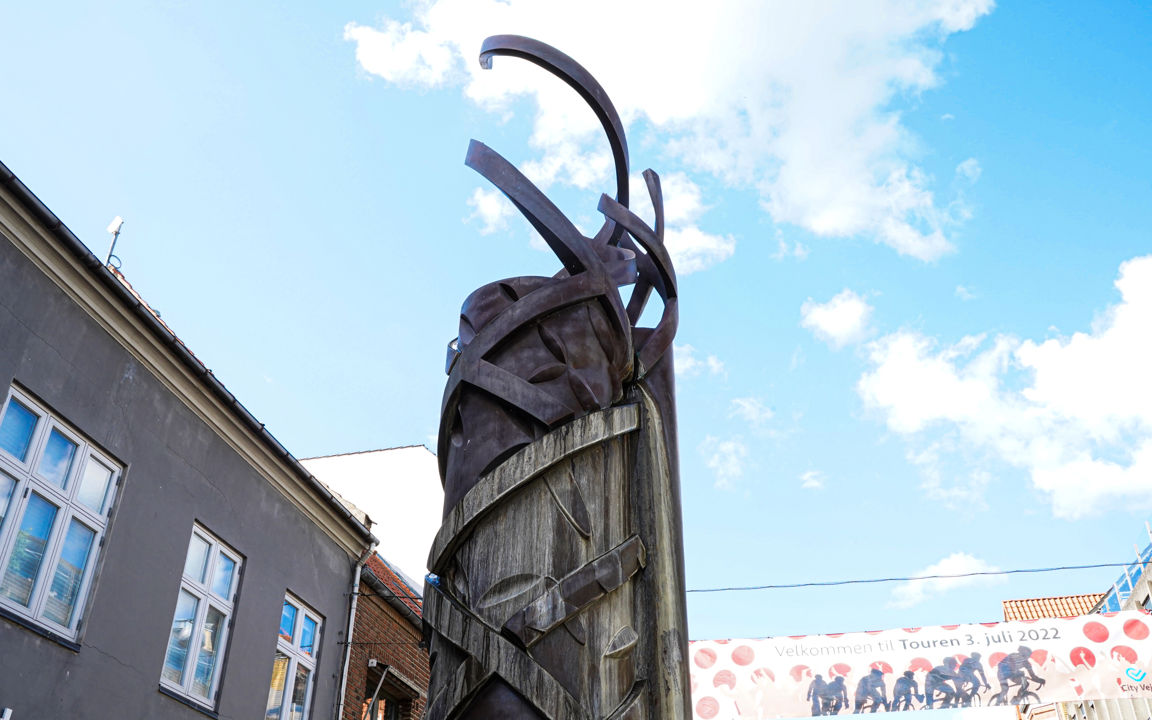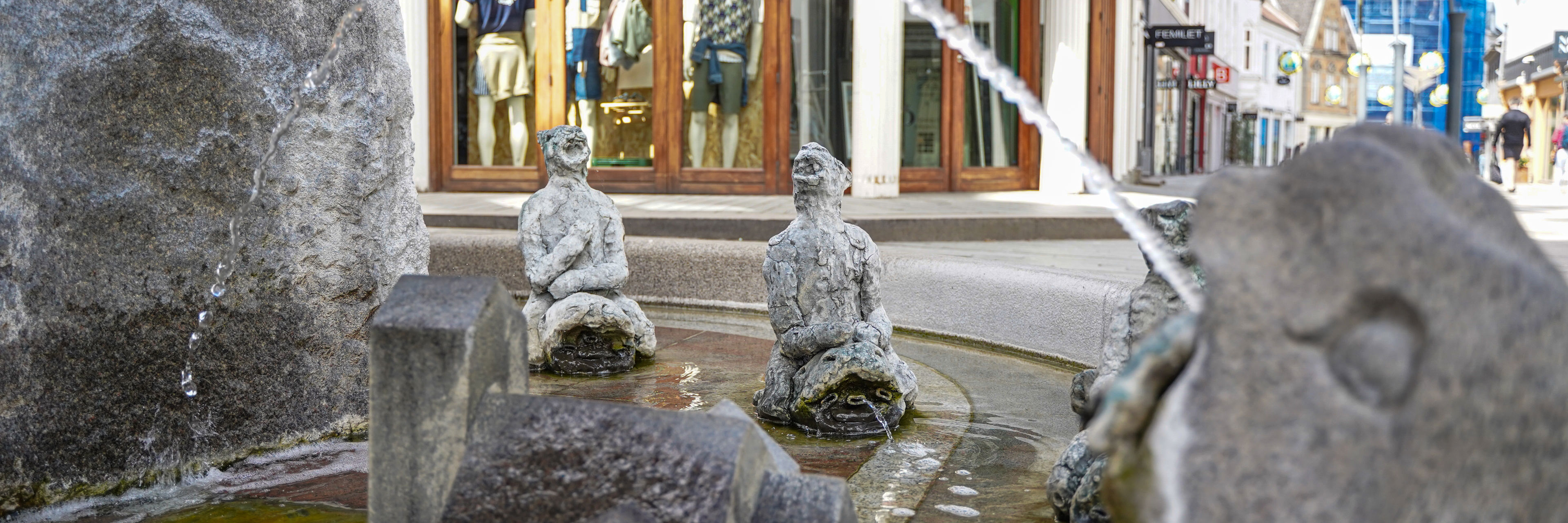
The Midgard Well (6)
Pontus Kjermann, 2001
About the work
Midgårdsbrønden (The Midgard Well) is a fountain/sculptural well, acquired by Vejle Municipality and set up in 2001, positioned at the intersection between the pedestrian street in Vejle and Orla Lehmannsgade.
Pontus Kjermann’s water art is a round, low basin. In the middle, a mythical creature, a rearing mix of a horse and a human, sits on a large granite stone. Around the stone there are three distinctive buildings from medieval Vejle: one of the first town halls, St. Nicolai Church and Sønderport. The old town centre is marked in the tiling at the bottom of the basin, and the town centre is surrounded by water. A huge snake, which can be interpreted as the Midgard Serpent, one of the invincible mythical creatures from Norse mythology, is threateningly encircling the town of Vejle.
The snake represents the Midgard Serpent, which lies around Midgard where people live, in this case Vejle. The Midgard Serpent represents evil and therefore written on its body are the years when Vejle has been threatened by war, fire, or other calamities. The snake also represents the streams and water surrounding Vejle. The water can be dangerous, for example in floods, but it has also brought prosperity to the city, among other things through Vejle Watermill and trade.
The stone is a symbol of the two Jelling stones before images and runes were carved into them in the late 900s. These runes are especially important because this is where Denmark is mentioned for the very first time on Danish soil. On Harald’s stone it says that Harald Bluetooth “made the Danes Christian”, and therefore Harald’s stone is also called Denmark’s baptismal certificate. There are no runes or images on the stone in the sculpture because we must imagine it being from before Denmark was born as a nation. On the rest of the pedestrian street there are also references to the Jelling Stone, as its runes have been etched in the paving.
The horse man is Pontus Kjermann’s own fabulous animal that guards the town of Vejle. It is also the symbol of Vejle’s stubbornness to rise again after all the adversity that has hit the town over time. The horse man is thus a symbol of Vejle’s survival as a town. On the original Jelling Stone, there is a picture of the Midgard Serpent in battle with a mythical creature with a horse’s head and human body, just like the Horse Man. Therefore, the sculpture can also be interpreted as a battle between the Horse Man and the Midgard Serpent, who has surrounded the Jelling Stone and spits water on it.
The three lion cubs that ride on fish are the lions from Denmark’s national coat of arms. They have not yet grown up, because the story in the sculpture takes place before Denmark is created. The lion cubs try to keep the Midgard Serpent at a distance and protect the city.
About the artist
Pontus Kjermann was born in Gothenburg in 1954. He went to Denmark to be educated at the Royal Danish Academy of Fine Arts from 1979 to 1985. He made his debut at the Artists’ Autumn Exhibition in 1981 and has since exhibited several acclaimed places. Since 1985, he has been an associate professor at the School of Sculptors, specializing in plaster. In addition, he has performed numerous ornamentation assignments at home and abroad. He is a member of the Artists’ Society and Corner (2004).
The years on the snake
